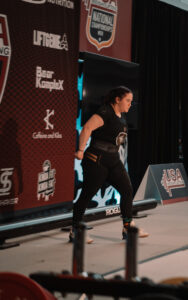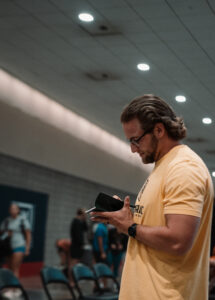Introduction
Soviet Russia did a lot of things wrong, but there were a few gems to come out of that time period . One of those gems being nearly all the literature we have today on training, specifically weightlifting training protocol. In the USSR, they were able to create one of those first state-sponsored sporting programs. This created the professional setting for the Olympic sports unlike even what we see today. These athletes lived and breathed weightlifting. Their lives were extremely regulated and primed solely to succeed in training and on the competition platform.
Flash forward to the current culture of training in the United States, and things are a little different. Unless you’re in the top 1% of athletes in the major leagues, then you’ve got a lot more stressors on your plate. The largest of those being that life can kind of suck sometimes. Weightlifting has switched from a small extremely niche sport with very few hobbyists, to now being a slightly less niche sport with quite a few more hobbyists.
Very long-drawn, highly periodized programs worked wonders in a place like Soviet Russia because every single stressor could be accounted for and taken into account. In most training environments, not so much. For most, weightlifting isn’t their only focus. People have lives, other hobbies, work, family, etc. The larger the number of unpredictable stressors, the less reliable a highly structured program becomes. You can have this perfect 12-week block, but if your athlete has a big work project due during the max-out week, your plan just crumbled and is potentially worthless.
Highly structured periodization is a great starting point to understand how to progress someone from point A to point B, but programs need to take into account that athletes are people and coaches need to make adjustments as such. In comes: autoregulation.
What is Auto-Regulation?
Auto-Regulation is simply adaptability within your programming. It comes with the understanding that an athlete doesn’t develop from a spreadsheet, but instead develops from the coach-athlete relationship.
We base our percentages on one rep maxes for programming; however, if I were to ask you to come in and squat your 1RM every day this week, do you think you could do it? Obviously not. Some days you may smoke it, some days you may get crushed by 80%. We understand as coaches that someone isn’t able to hit their 1RM every day, yet we don’t take that into account with our percentages and adapt to that.
Let’s say your 1RM snatch is 100kg. On week 1 day 1, you’re feeling amazing and could hit that number again. On week 2 day 1, you’re feeling like trash and theoretically can only snatch 90kg.
If in both of those training sessions, you were set to hit 80% of your 1RM, those will feel like two very different workouts. On the day you’re feeling your best, that 80% is a true true 80% because you could snatch your PR. But on week 2 day 1 where your theoretical 1RM is 90kg, you’re still working off percentages of that 100kg, making the percent for that day closer to 90% than 80%.
Auto-Regulation allows us to program based on the theoretical max for the day, rather than the 1RM you hit 6 months ago. The magic of periodization is not in hitting an arbitrary number or percent, it is in eliciting the stimulus to make an adaptation. In order to do that, we need to make changes based on how the athlete is able to perform on each given day.
Implementing Autoregulation
There are three main ways we can incorporate autoregulation into our programming.
1. RPE
Rating of Perceived Exertion (RPE) is simply just applying a 1-10 scale to how hard the lift felt. This can be extremely useful for squats and deadlifts, but is more difficult to do for the lifts. For example, what would you consider a 9 or 10 for a snatch? Is a 10 a miss? Is a 10 a very hard recovery or technical mistake? What is the difference between a 9 or 10 then?
Perhaps RPE could be much more applicable in a 0-3 context for the lifts. Where 0 = miss, 1 = bad, 2 = good, 3 = as perfect as could be. This helps much more with an athlete grading how they did, but is very hard to program. You could be working up to a max and all your warm-ups look terrible, then smoke your PR.
In the case of weightlifting, I would keep RPE to squats and deadlifts only. You can program working up to a certain RPE, or you could program a certain number of sets until you hit a designated RPE threshold.
2. VBT
Velocity-Based Training is the hot new thing in programming today. I personally haven’t had access to use VBT since I was interning in Division 1 sports, so I have very little to add to this topic. However, this will be by far the most accurate predictor of an athlete’s performance on a day to day. VBT gives you access to the exact metric of how an athlete is able to move a certain weight and can make changes from there. Including VBT could be as easy as doing the exact same thing as RPE, just with velocity instead. Keep going until you drop below a certain velocity or do as many sets/reps as you can until you drop below a certain threshold.
3. Daily Readiness Questionnaire
As a primarily remote coach, the daily questionnaire is what I opt for most and use on a daily basis with each of my athletes. This is obviously much more subjective than VBT is, but is far more accessible and fits well within the extremely mentally taxing sport that is weightlifting.
Every day before training, my athletes will open the app their program is on and be prompted with the following questionnaire.
“Rate and enter your daily readiness on a scale of 1-5 and auto-regulate the day’s percentage based on your rating.”
1 = Terrible (-8%)
2 = Below Average (-4%)
3 = Average (No Change)
4 = Above Average (+4%)
5 = Amazing (+8%)
This rating should be a mix of subjective and objective data.
Subjective – how you’re feeling, sleep quality, sleep duration, fatigue, soreness, stress
Objective – TrainHeroic Readiness survey, Smart Watch data, etc”
As seen, my athletes will rate how they’re feeling at the start of a session and raise, lower, or stay at their weights for the day. These changes will apply for all their lifts for the day. This has a two-fold benefit. First, athletes are able to adjust their training based on how they’re feeling. In a remote environment, it can be hard for me as a coach to know in the moment how they’re feeling. This allows them to push it when they can, and take it back when they need to. As mentioned, no one can hit their 1RM everyday. All this questionnaire does is match the percentages to their actual 1RM for the day. Second, this gives the athlete autonomy over their own training. It is their responsibility to self-reflect and be honest with how they’re feeling, and as a result, they’re in control of how they adjust their day’s numbers.
Wrapping It Up
There are a hundred different other ways you can incorporate autoregulation into your programming and none of these are more right than another. All that matters as a coach is that you understand that no one is at their best every day, and as such we need to be prepared to adapt. Your spreadsheet is only as effective as your ability to be flexible. You cannot outsmart all the stressors that your athletes deal with on a day to day. Check your ego at the door and understand that progress isn’t as straightforward as the textbooks make it seem. You can’t control everything. Control what you can, adapt for what you can’t.


